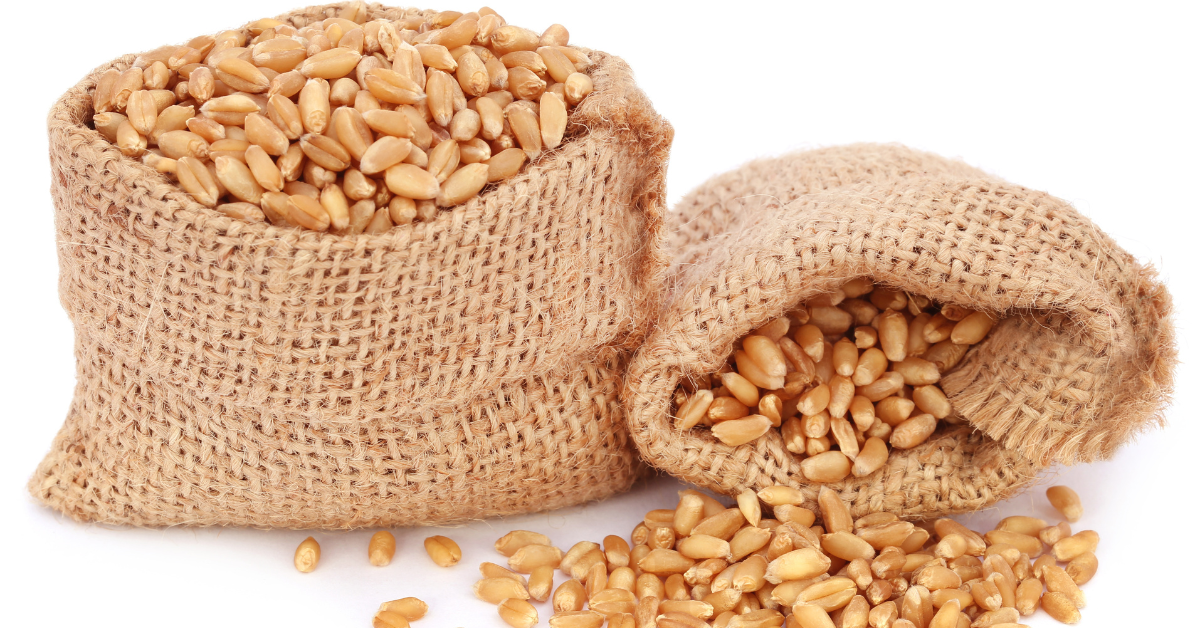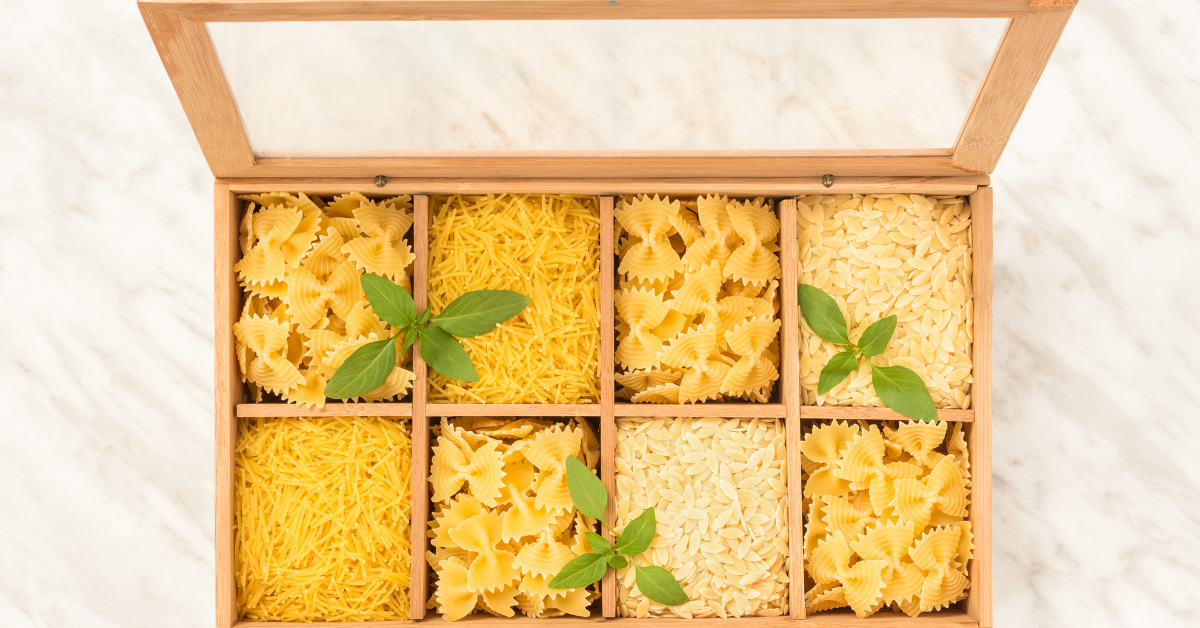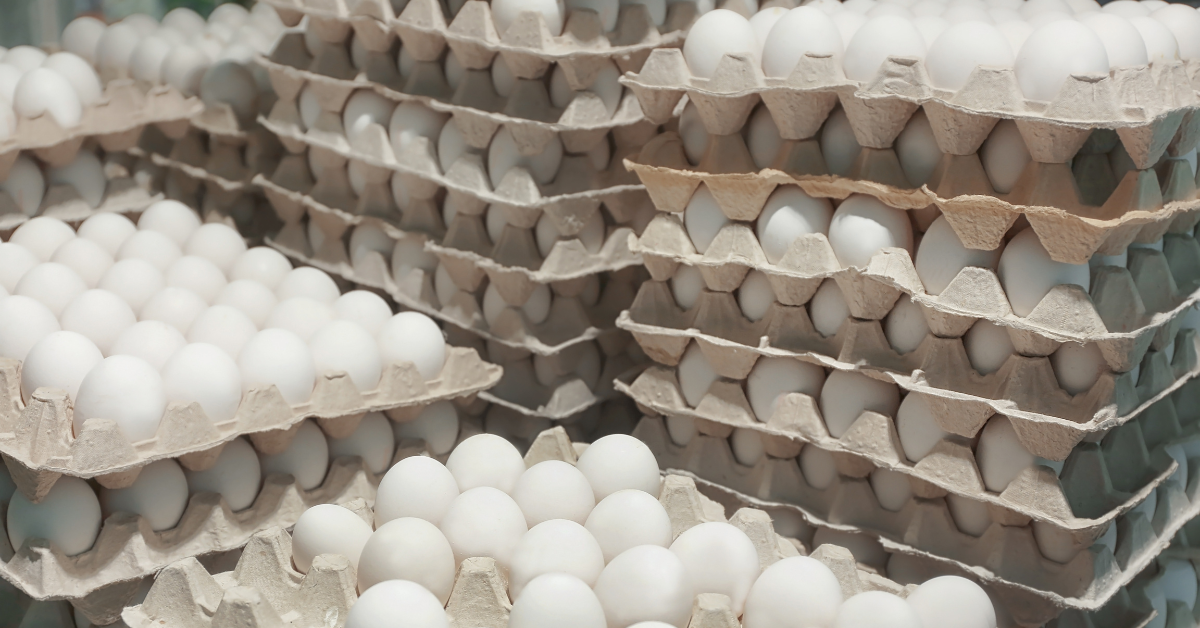If you are passionate about emergency preparedness, then you know how vital food with the longest shelf life can be. You understand that when all other short-term food spoils, and when the grocery stores’ shelves are empty, you will need to rely solely on foods with the longest shelf life.
Keep reading to see our list of food that lasts a long time. We cover everything from invaluable protein sources to staple food items you cannot live without to creature comforts for helping boost morale.
Protein Sources That Last A Long Time
Powdered eggs

If you are like us, then you agree that no breakfast is complete without eggs. But unfortunately, reliable access to fresh eggs might not always be possible. That’s wherepowdered eggs come into play.
You may be skeptical, but let us tell you that powdered eggs are an excellent substitute for the real thing. Even better, their long shelf life will allow you to enjoy them decades after purchasing.
Pemmican
Pemmican is a concentrated protein source consisting of a mixture of dried meat, tallow, and occasionally dried berries. It is a calorie-rich food item invented by Native Americans. Traditionally it is created with bison; however, moose, caribou, deer, and beef can also be used to make pemmican.
Jerky

Jerky is similar to pemmican, but without added tallow or dried berries. Many of us are accustomed to beef jerky, but the world of jerky is much more diverse than just beef. Nowadays, there is pork, salmon, elk, buffalo, bison, and even vegan jerky. Yes, you read that correctly—vegan jerky.
Freeze-Dried Meat
Freeze-dried meat is the ultimate long-term protein source. Its 25+ year shelf life is unmatched by any other food item. In addition, it is lightweight, convenient to prepare, and as nutritious as the real thing. We cannot think of any reason to not include freeze-dried meat in your emergency food stockpile.
Canned Items
One type of long shelf life food that should definitely be considered is canned goods. Canned goods, whether it's vegetables, fruits, meat, or even dairy products, can last anywhere from two to five years, making them a valuable addition to any emergency food stockpile. These products are cooked and sealed under high pressure, creating a vacuum seal that helps to preserve the food inside.
Fruits and vegetables

Canned fruits and vegetables will last for several years without losing any of their flavor or nutrition. So, when stockpiling canned fruits and vegetables, buy a few extra cans every time you shop. Before you know it, you’ll have a cornucopia of fruits and vegetables ready to add to your meals.
Meat
Canned meat, like tuna, beef, spam, anchovies, sardines, oysters, and chicken, are valuable protein sources with long shelf lives. They can be enjoyed straight out of the can or added to your meals for extra nutritional value.
Beans

Canned beans are the perfect supplemental protein source for meat. They work well as side dishes or as the main course. One of our favorite ways to use canned beans is in soups and chilis. Their convenience and nutritional value are hard to beat.
Soup
The variety of canned soups in grocery stores these days is astounding. You can eat canned soup every day for a month and never eat the same flavor twice. They are perfect for quick and easy, no hassle lunches or dinners. Add a side of freshly baked bread, and your meal is complete.
Pickled Vegetables

We recommend learning to pickle your vegetables if you grow a garden. Pickling vegetables is relatively simple and affordable. Better yet, it relieves the pressure to consume all the fresh food before it can spoil. And once things are pickled appropriately, they last forever.
On the other hand, if you don’t grow a garden, no worries. Store-bought pickled items, like sauerkraut, kimchi, pickles, onions, carrots, jalapenos, asparagus, and tomatoes, are also delicious. 
Tomatoes and Tomato Sauce or Paste
We cannot think of the last time we made a soup, stew, or chili that did not call for canned tomatoes, tomato sauce, or tomato paste. These three items are integral to so many meals, it's unbelievable. That’s why no pantry is complete without a serious stockpile of canned tomatoes, sauce, and paste.
Just remember, if you are going to eat any food item out of cans, make sure you know how to open a can without a can opener.
Frozen foods
Fruits and vegetables

Frozen fruits and vegetables last a long time and are easily added to various meals. For example, frozen fruits are perfect in smoothies. You can also reheat frozen fruits to make quick fruit compotes on top of your pancakes or waffles.
Frozen vegetables are delicious by themselves—just reheat and add butter, salt, and pepper. They really shine as additions to chili, soups, and pasta dishes when fresh vegetables are unavailable.
Ready-Made Meals
Frozen, ready-made meals have become increasingly more delicious over the years. Even better, they maintain their flavor and nutrition despite being frozen for long periods. They are perfect for when you run out of short-term food storage or don’t want to cook an elaborate meal.
Our favorite frozen ready-made meals include:
Herbs

Most of the time, herbs and spices are dried and kept in the pantry or on the spice rack. But you can also keep herbs and spices in your freezer. This is especially useful for bulk herb purchases or a large harvest from your garden.
We recommend processing the herbs and freezing them into ice cube trays. Then, when it’s time to add basil to your pasta dish, you can take a few from the freezer and melt them into your dish.
Instant Coffee, Tea, and Other Drink Mixes
Coffee and tea are invaluable to the daily routines of millions of people. If you are one of those people, don’t forget to incorporate both into your stockpile. Both coffee and tea have long, reliable shelf lives. This is especially true for powdered coffee. And tea is simply dried herbs, so it makes sense that it would last a while.
We also recommend prepping drink mixes, like electrolyte powders, powdered lemonade, and Gatorade powder. Drink mixes help break up the monotony of plain water and add valuable sugars, vitamins, and minerals to your diet.
Condiments
Bouillon

Bouillon is the French word for broth. Bouillon paste is concentrated broth, and bouillon cubes are dehydrated squares of broth. Bouillon is essential for soups, stews, and chilis. We love it because it takes up considerably less space than boxes of broth or stock—and it’s equally delicious. What’s not to love?
Sweeteners
A great addition to your sweeteners list is Stevia. Stevia is a natural sweetener derived from the leaves of the stevia plant (Stevia rebaudiana). It's considered a non-nutritive sweetener, meaning it contains little to no calories or carbs. Unlike other sugar substitutes, stevia is derived from a plant, making it a natural alternative to artificial sweeteners.
Another great option to consider for long shelf life food is honey. Pure honey has no expiration date and can last indefinitely if stored properly, which makes it a perfect addition to your survival pantry. Honey not only serves as a sweetener, but it also has antimicrobial and antibacterial properties, making it a useful item in emergency medical situations.
Here’s a list of our favorite sweeteners we recommend incorporating into your food prepping:
- Jams and jellies
- Agave syrup
- Honey
- Sugar—brown, powdered, and white
- Honey
- Maple syrup
- Powdered jello
Spices

Food without spice is like a day without sun—dull. Therefore, in our opinion, spices are mandatory for any kitchen. Nevertheless, our favorite thing about spices is not how much flavor they can provide our food, but how long they stay fresh.
Another significant reason to keep spices in your stockpile is their medicinal properties. Many spices like turmeric, cinnamon, and ginger have been used in traditional medicine for centuries, providing anti-inflammatory benefits and boosting immunity. Incorporating these spices in your daily meals can not only add flavor but also keep you healthy.
If you are concerned about spices taking up too much room in the kitchen or pantry, then stick with the top five:
- Salt. Need we say more?
- Pepper. Grinding your own is even more delicious.
- Garlic powder. No food should exist without garlic.
- Oregano. Irreplaceable for many Italian and Mexican dishes.
- Cinnamon. Perfect for baking, oatmeal, cereal, coffee, tea, and sweet treats.
Oils
Can you remember the last meal you cooked that didn't rely on some sort of oil? That’s because cooking oils add valuable nutrition, flavor, and texture to our foods. We love having various oils in the kitchen and pantry because we have favorites for certain tasks. But if you want to simplify, the holy trinity of oils is olive, vegetable, and canola.
Vinegar
In the kitchen, vinegar is the best friend of oil—oftentimes, you cannot have one without the other.But vinegar isn’t only useful in the kitchen. You can use vinegar for cleaning surfaces, removing odors, repelling insects, and cleaning clothes.
Longest Shelf Life Food: Meals Ready To Eat (MREs)
Back in the day, MREs were just for military personnel, but nowadays, MREs have become popular among preppers and survivalists due to their long shelf life, valuable nutrition, and convenience. Because of their compact and lightweight size, MREs are great for keeping in the basement or, even better, in yourbug-out bags.
Staple Food Items with Longest Shelf Life
Dried legumes: Food That Lasts a Long Time

Legumes are one of the best sources of plant protein. Legumes are also valuable sources of important vitamins and minerals. In their dried, raw state, they are one of the most reliable foods that last a long time.
We recommend keeping a variety of legumes in your pantry. That way, you can incorporate legumes into a variety of dishes to keep things interesting. Some of our favorites include:
- Pinto beans
- Black beans
- Lentils (brown, green, and red)
- Peas
- Kidney beans
- Black-eyed peas
- Chickpeas
- Navy beans
It is worth mentioning that although dried legumes are incredibly nutritious, they do take a lot of time to prepare. So plan ahead.
Rice
No long-term food storage is complete without rice. Rice is one of the most heavily consumed foods on planet Earth. Rice is well-known for being a versatile food. It can be cooked in a variety of ways and processed into different forms—for example, rice flour.
Rice is also popular because of its long, reliable shelf life, especially white rice. Depending on the type of rice and how it is stored, theshelf life of rice is anywhere between a few months to 30 years.
Pasta: The Long-lasting Must-have Food

Pasta is another one of those “must-have” food items. Pasta is in the list of top five foods with the longest shelf life. For that reason, you would be hard-pressed to find a prepper pantry without multiple types of pasta.
Incorporating the aspect of emergency preparedness, it's beneficial to have a stock of grains and cereals in your pantry. Dry goods like rice, oats, pasta, and quinoa are all non-perishable foods that last a long time. Apart from being filling, they are versatile and can be used in various meals from breakfast to dinner. For instance, rice can be used in stir-fries or as a side dish, oats are perfect for a nutritious breakfast, and pasta is the foundation of many comfort foods.
Oats: Versatile and Long-lasting Staple Food
Oats are one of the most versatile staple food items. You can boil them to make oatmeal, toast them, bake them into bread or muffins, grind them into flour, or even make them into oat milk.
Plus, oats are very affordable and can be bought in bulk amounts. They can be easily stored and kept fresh for many years.
Flour: Essential Food with Long Shelf Life
If you have even a single baking bone in your body, then flour should be in your stockpile, as it’s affordable and extremely versatile. Don’t worry, you don’t have to be a professional pastry chef to use flour. Some of the bestsurvival bread recipes only call for three to five ingredients.
Grains: An Array of Food That Lasts a Long Time

We recommend having a selection of grains in your emergency food stockpile. Grains like quinoa, barley, flax, millet, grits, and rye are super versatile. And when properly sealed in airtight containers, they can last upwards of 10 years.
Baking powder: Essential for Cooking and More
If you are going to bake anything, even the simplest three-ingredient survival bread, then you are going to need some baking powder. But baking powder isn’t only helpful for baking—it also hashelpful household uses.
You can use baking powder as a detergent, a deodorizer, an insect repellent, to shine steel, and to clean surfaces. And while you are in the baking aisle at the store, don’t forget to get some baking soda as well.
Cornstarch: A Long Shelf Life Food

Forever is a strong word; but when we think about the long shelf life of cornstarch, forever may be the best adjective to describe it. When stored in a cool, dark, dry area, and kept in its original packaging or something better, corn starch will last for an indefinite amount of time.
Cornstarch is ideal for thickening sauces, gravies, and pie fillings. It can also be used as a deodorant and dry shampoo.
Popcorn: A Snack with an Impressively Long Shelf Life
We are convinced that popcorn is one of the best snacks known to mankind. It’s easy to make, has a wonderful flavor, and even provides some valuable nutrition. Plus, it’ll sit on your shelves for years and never spoil.
Snack Foods That Last a Long Time
Protein bars: Ready-made Snacks with Long Shelf Life

Ready-made bars of all sorts—protein, energy, breakfast, and snack—should always be in the pantry. They come in a variety of flavors to prevent monotony, and when left in their packaging, can last a long time without spoiling. They are especially perfect for bugging out.
Dried fruit: Delicious Long-lasting Food
Every time we eat dried fruit, we are surprised by how simple and delicious it can be. What’s even better is that you don’t have to deal with the juicy, sticky mess some fruits make. We especially love raisins, mangos, craisins, banana chips, and fruit leathers; andfreeze dried fruit is on a whole ‘nother level!
Nuts: Nutritious Snacks with Long Shelf Life

Nuts, whether they are raw or roasted, have a long shelf life—and they come with some serious nutrition. It's hard to believe that such a small food can be so healthy for you. We recommend keeping a variety around the house, like peanuts, cashews, almonds, pecans, walnuts, and macadamia nuts.
Dark Chocolate: A Sweet Treat with a Long Shelf Life
We think everysurvival plan should incorporate a few creature comforts. Dark chocolate is the perfect example. Of all the different forms of chocolate, dark chocolate lasts the longest on the shelf. When stored properly, dark chocolate can last for many years. If you are a fan of milk or white chocolate, just make sure to eat it within the year.
Fresh Vegetables: Food with the Longest Shelf Life
Food with the longest shelf life doesn’t only come in cans, boxes, or bags. Believe it or not, there are a variety of fresh vegetables, particularly root vegetables, that can last a long time under the right conditions. The following foods are best kept in aDIY root cellar, but any cool, dry, dark space will keep these foods from spoiling for months.
- Potatoes
- Onions
- Squash
- Carrots
- Beets
- Radishes
- Garlic
Alcohol: Long Shelf Life and Versatile Uses

For some of us, alcohol fits into the creature comfort category. However, there’s actually some science out there that reviews a few potentialhealth benefits from alcohol—so long as it’s enjoyed in moderation.
But even if you don’t drink alcohol, it’s a good idea to keep it around. You can use alcohol to disinfect items and as fuel for fire.
When unopened, a bottle of alcohol will last for an indefinite amount of time. However, after the bottle has been opened, it’s best to use it within one to three years.
Final Thoughts On Long Shelf Life Foods
There’s a lot to think about when prepping for unexpected natural disasters or other types of emergencies. It can be convoluted having to think about all the different survival scenarios and trying to gather equipment and materials.
When it comes to food prepping, the solution is simple—stockpile as much long shelf life food as possible.
We hope you found this article helpful. When you are ready to build up your stockpile of foods with long shelf lives, visit our website to see our current selection of freeze-dried and dehydrated emergency food kits. All with a shelf life of 25 years!



